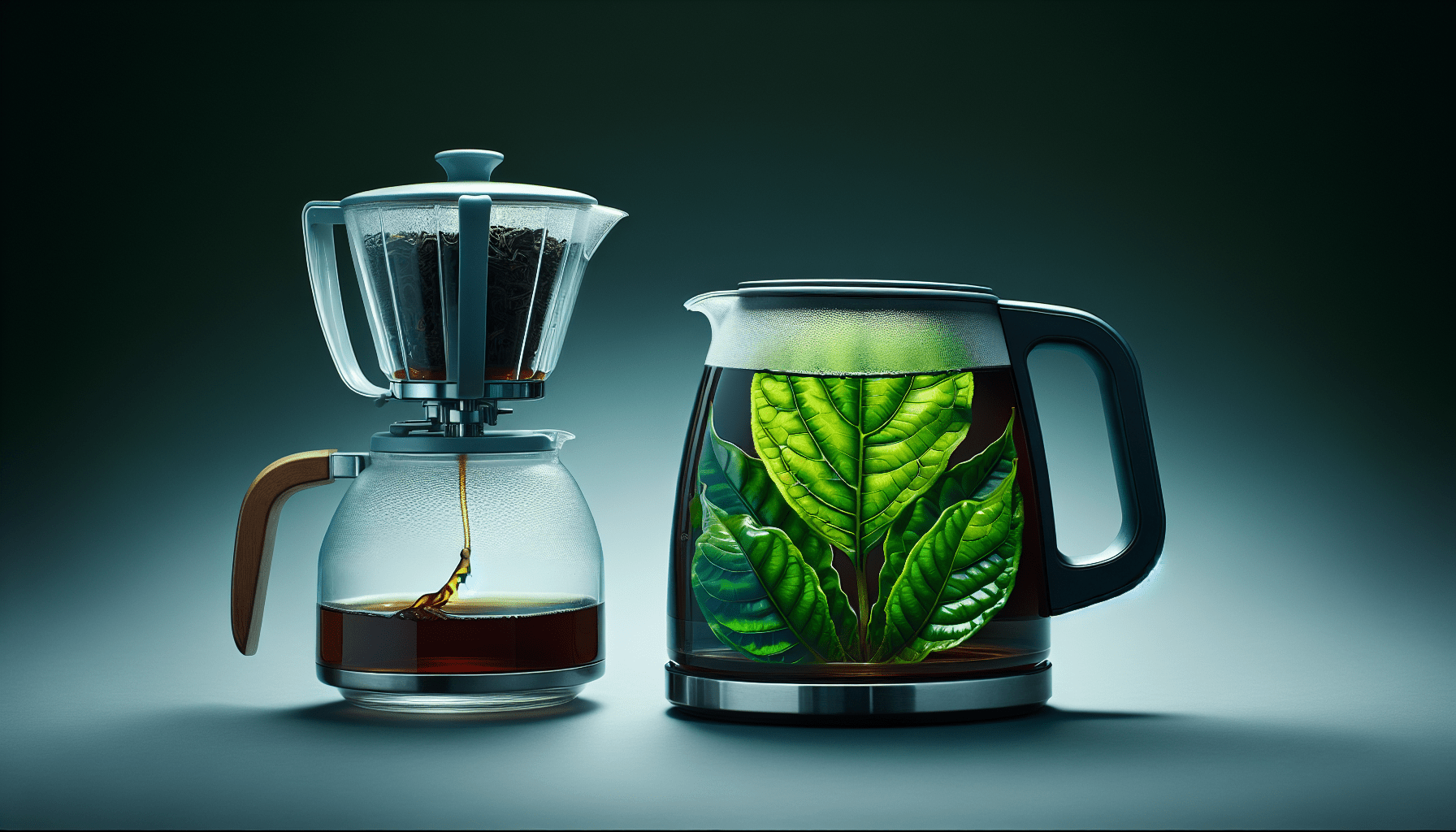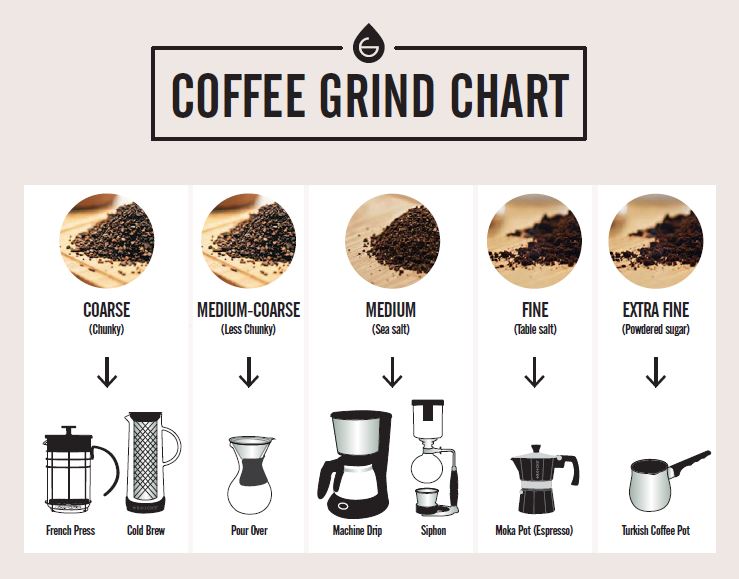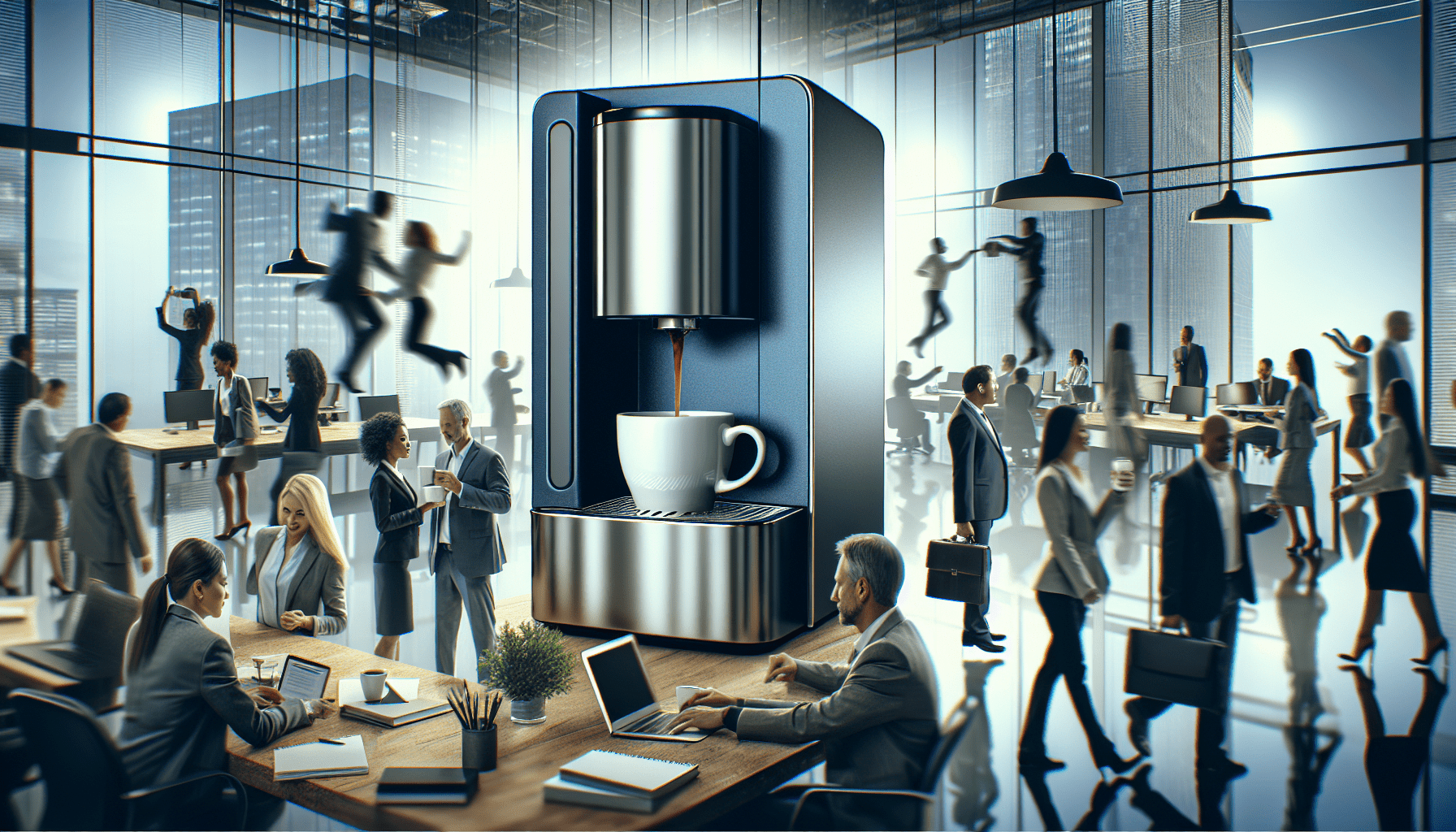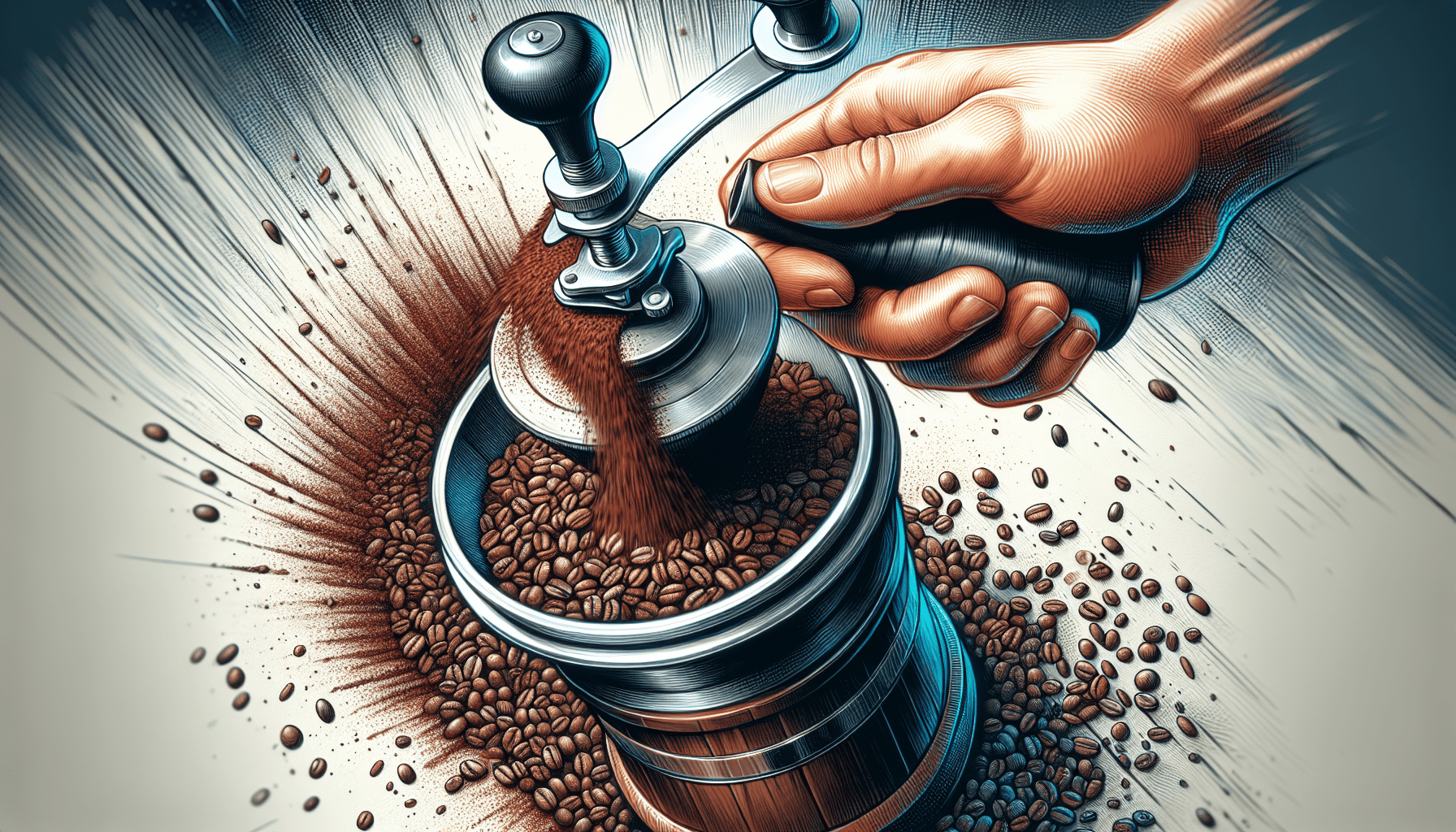So you’re in a pinch, craving a cup of tea and realizing that you don’t have a kettle or a teapot. But wait, can you make tea in a coffee maker? The answer might surprise you. In this article, we’ll explore the unconventional method of brewing tea using a coffee maker. Whether you’re a coffee aficionado or a tea enthusiast, get ready to discover a new way to satisfy your tea cravings with just a flick of a switch.
Introduction
Explanation of the topic
In this article, we will explore the possibility of making tea in a coffee maker. While it may seem unconventional, many tea enthusiasts have wondered whether their trusty coffee maker could also serve as a convenient tool for brewing tea. We will delve into the differences between tea and coffee makers, and discuss the suitability of using a coffee maker for making tea.
Purpose of the article
The purpose of this article is to provide you with a comprehensive understanding of tea and coffee makers, and to guide you through the process of making tea in a coffee maker if you choose to do so. We will cover the steps involved, the types of tea that are suitable for coffee makers, as well as share some tips and alternative methods for brewing tea. By the end of this article, you will have the knowledge and confidence to experiment with making tea in your coffee maker.
Understanding Tea and Coffee Makers
Differences between tea and coffee makers
While both tea and coffee makers serve the purpose of brewing hot beverages, there are key differences between the two. Coffee makers are designed specifically for brewing coffee, focusing on extracting flavors from ground coffee beans through the process of brewing. Tea makers, on the other hand, are often designed with features that cater to the delicate process of steeping tea leaves to release their flavors and aromas.
How coffee makers work
Coffee makers typically consist of a water reservoir, a heating element, a basket for the coffee grounds, and a carafe to collect the brewed coffee. The water is heated and then dripped over the coffee grounds, allowing the water to filter through and extract the flavors. The brewed coffee then flows into the carafe, ready to be served.
How tea makers work
Tea makers, on the other hand, may come in various forms such as teapots, tea kettles, or even specialized electric tea makers. They are designed to hold and steep loose tea leaves or tea bags in hot water for a specific amount of time, allowing the flavors and aromas of the tea to infuse into the water. Some tea makers also provide options for controlling the water temperature and steeping time, catering to different types of tea.
Can You Make Tea in a Coffee Maker?
Types of coffee makers
Coffee makers come in different types such as drip coffee makers, espresso machines, French presses, and single-serve pod machines. Each type functions differently and may have specific features that impact its suitability for making tea.
Suitability of coffee makers for making tea
While coffee makers are not specifically designed for brewing tea, they can be used to make tea with certain considerations. The suitability depends on factors such as the type of coffee maker, its features, and the desired outcome of the tea. Some coffee makers may yield better results for certain types of tea, while others may not be ideal due to their brewing methods.
Advantages of using a coffee maker for tea
Using a coffee maker to brew tea can have some advantages. Firstly, it can be a convenient option if you already have a coffee maker at home and want to try making tea without investing in a separate tea maker. Additionally, coffee makers often have settings for controlling the water temperature, which is essential for different types of tea. They can also be programmed for automatic brewing, allowing you to enjoy a fresh cup of tea at your desired time.
Potential drawbacks of using a coffee maker for tea
While using a coffee maker for tea can be convenient, there are some potential drawbacks to consider. Coffee makers are optimized for brewing coffee, which means that they may not provide the ideal conditions for steeping tea leaves. The water flow and extraction process in coffee makers may not fully capture the delicate flavors and nuances of tea. Furthermore, brewing tea in a coffee maker may leave behind residual flavors that could affect the taste of future coffee brews.
Steps to Make Tea in a Coffee Maker
Selecting the right coffee maker
When choosing a coffee maker for making tea, consider the features that would best suit your preferences. Look for models that allow you to control the water temperature and provide options for adjusting the brewing strength. French presses can also be a good choice as they allow for direct immersion of the tea leaves in hot water.
Cleaning the coffee maker
Before making tea in your coffee maker, ensure that it is clean and free from any coffee residue. Run a cleaning cycle with water and vinegar to remove any lingering flavors. This step is important to prevent flavor contamination in your tea.
Choosing the tea and water
Select the type of tea that you would like to brew. Different teas require different brewing temperatures, so make sure to choose one that suits your coffee maker’s temperature settings. Additionally, use fresh and filtered water to enhance the flavor of your tea.
Preparing the coffee maker
Fill the coffee maker’s water reservoir with the desired amount of water and ensure that all components are properly assembled. If your coffee maker has temperature control settings, adjust it according to the type of tea you are brewing. Preheat the coffee maker to the desired temperature to ensure a consistent brewing process.
Brewing the tea
Place the appropriate amount of tea leaves or tea bags in the coffee maker’s brewing basket. Adjust the strength of the tea by adding more or fewer tea leaves, depending on your preference. Start the brewing process, allowing the hot water to flow over the tea leaves and extract the flavors. Ensure that the brewing time is appropriate for the type of tea you are using.
Serving the tea
Once the brewing process is complete, carefully pour the brewed tea into a teapot or directly into cups. Discard any tea leaves or tea bags from the brewing basket. Serve the tea hot and enjoy it according to your taste preferences. Remember to clean the coffee maker thoroughly after brewing tea to prevent any residual flavors from affecting future coffee brews.
Types of Tea Suitable for Coffee Makers
Herbal teas
Herbal teas, also known as tisanes, are caffeine-free infusions made from a variety of herbs, flowers, fruits, and spices. Since herbal teas are typically steeped in boiling water, they can generally be brewed in coffee makers without the need for precise temperature control.
Black teas
Black teas are fully oxidized and robust in flavor. They generally require higher water temperatures for brewing, making coffee makers with adjustable temperature settings suitable for brewing black tea. The strong flavors of black tea can complement the brewing process of coffee makers.
Green teas
Green teas are unoxidized and known for their delicate flavors. They require lower water temperatures for brewing, which can be challenging with some coffee makers. However, coffee makers with temperature control settings can provide the necessary conditions for brewing green tea.
Oolong teas
Oolong teas are partially oxidized, falling between black and green teas in terms of flavor and oxidation level. Similar to green teas, oolong teas require lower water temperatures for brewing, making coffee makers with temperature control options ideal for steeping oolong tea leaves.
White teas
White teas are minimally processed and known for their subtle and delicate flavors. They require lower water temperatures for brewing, which can be achieved with coffee makers that offer temperature control settings. When brewing white tea in a coffee maker, it is important to ensure that the water temperature is not too high to avoid overpowering the delicate flavors.
Tips for Brewing Tea in a Coffee Maker
Proper water temperature
To achieve the best results when brewing tea in a coffee maker, pay attention to the water temperature. Different types of tea require different temperatures, so adjust the coffee maker’s temperature settings accordingly. Using water that is too hot or too cold can affect the extraction of flavors and result in a less enjoyable cup of tea.
Tea steeping time
Each type of tea has a recommended steeping time to achieve the desired flavor. Be mindful of this when using a coffee maker for steeping tea. If your coffee maker does not have a timer, use a separate timer to ensure that you don’t oversteep the tea, which can make it bitter.
Controlling the strength of the tea
Coffee makers typically have options for adjusting the strength of the coffee, and this feature can be utilized when brewing tea. If you prefer a stronger cup of tea, you can add more tea leaves to the brewing basket. Conversely, if you prefer a milder cup, reduce the amount of tea leaves used. Experiment with different amounts to find the perfect balance for your taste.
Experimenting with different tea varieties
One of the advantages of using a coffee maker for tea is the opportunity to experiment with different tea varieties. Coffee makers can handle a range of teas, so don’t be afraid to try different flavors and blends. Expand your tea palate and discover new favorites by exploring various options available in the market.
Alternative Methods for Making Tea
Using a kettle and teapot
A traditional method of brewing tea involves using a kettle to heat water to the appropriate temperature and pouring it over tea leaves or tea bags in a teapot. This method offers more control over the brewing process and is suitable for those who prefer a hands-on approach to making tea.
Using a microwave
If you are looking for a quick and convenient way to brew a single cup of tea, using a microwave can be an option. Simply place the desired amount of water and tea leaves or tea bag in a microwave-safe container, heat it for the recommended time, and allow the tea to steep before removing the container.
Using a stovetop
Similar to the kettle and teapot method, using a stovetop involves heating water in a pot or kettle over a stovetop burner. Once the water reaches the desired temperature, it is poured over tea leaves or tea bags in a teapot. This method allows for precise control over the water temperature and brewing process.
Cleaning and Maintenance
Cleaning after brewing tea
After brewing tea in a coffee maker, it is important to clean the machine thoroughly to prevent any residual flavors from affecting future brews. Empty the brewing basket, rinse it well, and wash it with warm soapy water. Clean the carafe, water reservoir, and any other removable parts. Run a cleaning cycle with water and vinegar to remove any remaining traces of tea.
Preventing flavor contamination
To prevent flavor contamination in your tea, it is essential to clean the coffee maker before brewing tea. Coffee residues can impart unwanted aromas and flavors to your tea. Use a coffee-specific cleaning product or run a cleaning cycle with water and vinegar to ensure a clean brewing environment.
Regular maintenance and descaling
Regular maintenance of your coffee maker is essential to keep it in good working condition. Follow the manufacturer’s instructions for descaling the machine to remove mineral deposits and ensure optimal performance. Descaling should be done periodically, depending on the hardness of the water in your area.
Safety Considerations
Proper handling of hot liquids
When using a coffee maker or any other hot beverage brewing method, it is important to handle hot liquids with caution. Use oven mitts or pot holders to handle hot carafes or teapots. Be careful of steam when opening lids or pouring hot tea.
Potential risks and precautions
Brewing tea in a coffee maker carries some potential risks. Coffee makers are designed for brewing coffee, and using them for tea may result in suboptimal flavor extraction. Additionally, pouring hot water into a coffee maker can increase the risk of burns or scalds. Follow safety guidelines and precautions to minimize any potential risks.
Avoiding damage to the coffee maker
When brewing tea in a coffee maker, it is essential to follow the manufacturer’s instructions to avoid any damage to the machine. Ensure that the coffee maker is suitable for steeping tea and that the water temperature settings are appropriate. Prevent overfilling or using improper containers that can lead to leaks or spills.
Conclusion
Summary of key points
In this comprehensive article, we explored the possibility of making tea in a coffee maker. We discussed the differences between tea and coffee makers, and considered the suitability of using a coffee maker for brewing tea. We provided step-by-step instructions for making tea in a coffee maker, including selecting the right machine, cleaning and preparation, and brewing and serving the tea. Additionally, we highlighted the types of tea that are suitable for coffee makers and offered tips for brewing the perfect cup of tea.
Final thoughts and recommendations
While using a coffee maker for tea may not provide the same level of precision and flavor extraction as a dedicated tea maker, it can be a convenient option for those who already have a coffee maker at home. By following the guidelines and tips provided in this article, you can experiment with different types of tea and enjoy a satisfying cup of tea brewed in your coffee maker. However, if you are a tea connoisseur seeking the finest flavor and aroma, investing in a specialized tea maker may be the ideal choice. Ultimately, the choice between a coffee maker and a tea maker depends on your preferences and brewing needs.




